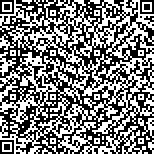| 摘要: |
| 随着纳米塑料在海洋中的分布越来越广泛, 纳米塑料逐渐演变成目前海洋生态系统中面临的严重环境问题之一, 引起人们的广泛关注。纳米塑料比微塑料粒径更小, 具有更大的比表面积与吸附力, 成为海洋中污染物的重要载体之一, 影响深远。双壳类具有滤食特殊摄食方式, 可通过食物链影响其他营养级生物, 是食物链中重要一环。本文主要就纳米塑料的定义与来源、在海洋中的污染现状、对海洋双壳类的生态毒理效应进行阐述。纳米塑料可以通过海洋生物呼吸和进食过程中摄入体内, 在吞噬细胞中诱导氧化应激、线粒体损伤和细胞毒性并产生严重的炎症反应。研究表明, 在有其他污染物的存在下, 纳米塑料的存在, 会增加污染物在海洋生物体内的留滞时间, 从而加大其毒性。纳米塑料可以通过食物网对海洋生态系统构成威胁。 |
| 关键词: 纳米塑料 污染现状 双壳类 生态毒理效应 |
| DOI:10.11759/hykx20220827002 |
| 分类号:P735; X55 |
| 基金项目:国家重点研发计划(2019YFC1407800) |
|
| Current status of marine nanoplastic pollution and its ecotoxicological effects on bivalves |
|
YANG Can1,2,3, XU Wen-zhe1,2, SUN Jun1,2,3,4,5
|
|
1.College of Marine and Environmental Sciences, Tianjin University of Science & amp;2.Technology, Tianjin 300457, China;3.Research Centre for Indian Ocean Ecosystem, Tianjin University of Science and Technology, Tianjin 300457, China;4.Institute for Advanced Marine Research, China University of Geosciences, Guangzhou 511462, China;5.College of Marine Science and Technology, China University of Geosciences(Wuhan), Wuhan 430074, China
|
| Abstract: |
| The increased ocean-water contamination due to the increasing amount of nanoplastics has become one of the serious environmental problems in marine aquatic ecosystems, which has attracted widespread attention. Nanoplastics have a smaller particle size and larger specific surface area and adsorption power than microplastics, becoming one of the important carriers of pollutants in the ocean, with far-reaching effects. Further, they can enter the body during the respiration and feeding of marine organisms. Studies have shown that the presence of nanoplastics in the presence of pollutants increases the retention time of pollutants in marine organisms, thus increasing their toxicity. This can pose a threat to ecology and human health through the food web. Bivalves play an important link in the food chain because of their special feeding mode known as filter feeding, which responds significantly to changes in water bodies and is often used for water-body assessment. This review focuses on the definition and sources of nanoplastics, the current status of pollution in the ocean, and the ecotoxicological effects on marine organisms, mainly bivalves. |
| Key words: nanoplastic pollution status bivalves ecotoxicological effects |
